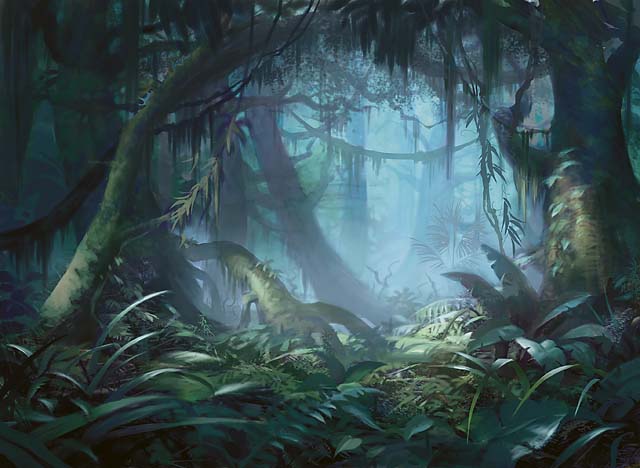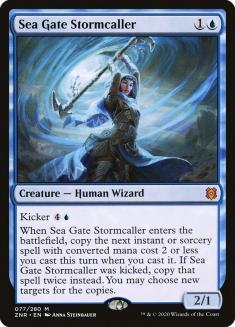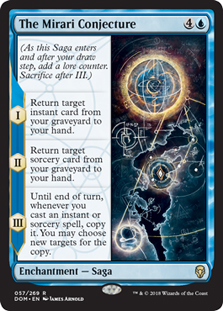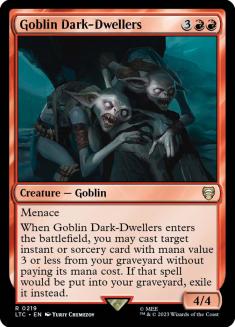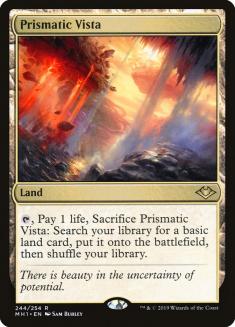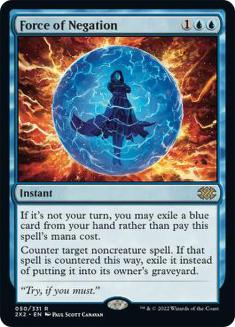The Magic Online Championship is always a unique event in the competitive Magic calendar and this one didn’t disappoint. After many weekends watching and now commentating events on Arena I’m increasingly comfortable with Magic Online’s younger, prettier sibling but there was something refreshing about going back to my roots — especially to watch formats exclusive to Magic Online for now with the pandemic hiatus on tabletop play. The commentary team, including our own Cedric Phillips and Patrick Sullivan, did an excellent job guiding viewers through what must have been a highly confusing but intriguing experience for anyone who tuned in expecting to see yet another Standard tournament on Arena.
Each of the three formats has more than enough big-picture takeaways for its own article but I’ll share my impressions as the event unfolded.
Vintage Cube like you’ve never seen it before…
There’s no shortage of content whenever the Vintage Cube returns to Magic Online but this is the first time in many years that Cube has featured as a competitive format in a high-stakes tournament. If Cube is normally an excuse to blow off steam in a way that’s fun for you, Cube with $250,000 in the prize pool looks a lot different — players who force Storm in every draft will give basic Mountain another look, while Figure of Destiny fans are more willing to take it slow with Steam Vents. There are no stipulation drafts here and fewer genuine decks that look like stipulation drafts gone awry.
Notably, the dynamic in pod play differs a lot from what you may be used to in Leagues. You won’t expect to face mirrors unless you are in a deep and generic archetype or colour combination; the better your green ramp deck is, the less you have to fear similar decks as you have more fully cornered the market on cards for that strategy. You also know that your opponents’ decks are more likely to resemble the average distribution of decks in a Cube — you’ll face the ideal Reanimator or Mono-Red Aggro deck at most once. This can affect marginal card choices; for example, green ramp has an excess of strong five-drops in the Vintage Cube and should prioritize those that are better against other colours and encourage deckbuilding with a more balanced range of opponents in mind.
This also opens the possibility of hate-drafting cards that are integral to other strategies. This is an overrated tactic in retail Limited — picking up another playable or useful sideboard card usually has more value than depriving one opponent of a single card that may not come up even if you face them and most Limited bombs don’t lean heavily on synergies with other cards. Vintage Cube is full of cards with high ceilings that rely on specific interactions — removing Emrakul, the Aeons Torn from the card pool can preemptively neuter Channel or Sneak Attack — and committing to archetypes like Reanimator or Storm is much more dangerous when someone can derail your draft by stopping a key card from wheeling.
These conditions will change when you hop in the Cube queues over the holidays but watching these elite players still yields useful lessons:
Make the most of your broken cards — especially when you don’t have many.
Creatures (12)
- 1 Mother of Runes
- 1 Lodestone Golem
- 1 Hero of Bladehold
- 1 Phyrexian Revoker
- 1 Silverblade Paladin
- 1 Spirit of the Labyrinth
- 1 Goblin Rabblemaster
- 1 Containment Priest
- 1 Soulfire Grand Master
- 1 Kytheon, Hero of Akros
- 1 Goblin Dark-Dwellers
- 1 Recruiter of the Guard
Planeswalkers (3)
Lands (17)
Spells (8)
- 1 Lightning Bolt
- 1 Armageddon
- 1 Disenchant
- 1 Chrome Mox
- 1 Gruul Signet
- 1 Lightning Strike
- 1 Unexpectedly Absent
- 1 Fractured Identity
Sideboard
- 1 Cabal Ritual
- 1 Treachery
- 1 Metalworker
- 1 Savannah
- 1 Wildfire
- 1 Sulfuric Vortex
- 1 Repeal
- 1 Sower of Temptation
- 1 Spectral Procession
- 1 Raging Ravine
- 1 Copperline Gorge
- 1 Goblin Electromancer
- 1 Selfless Spirit
- 1 Chart a Course
- 1 Field of Ruin
- 1 Narset, Parter of Veils
- 1 Force of Negation
- 1 Giver of Runes
- 1 Shark Typhoon

Creatures (13)
- 1 Solemn Simulacrum
- 1 Wall of Blossoms
- 1 Yavimaya Elder
- 1 Wall of Roots
- 1 Oracle of Mul Daya
- 1 Emrakul, the Aeons Torn
- 1 Ulamog, the Infinite Gyre
- 1 Blightsteel Colossus
- 1 Courser of Kruphix
- 1 Walking Ballista
- 1 Ramunap Excavator
- 1 Golos, Tireless Pilgrim
- 1 Dryad of the Ilysian Grove
Lands (17)
Spells (10)

Oliver Tiu began the tournament in style by opening Black Lotus on stream in his first pack. How should that start inform the rest of your draft? What if that Lotus were ‘just’ a Mox instead?
The fast mana seems like it should have a uniform effect across decks but the reality is more complicated. Decks or draws with high ceilings but several moving parts are less likely to have an immediate use for this burst of mana but also less likely to require it; by contrast, less powerful but less demanding decks or draws need that mana to make up for a gap in efficiency or card quality. The clunky midrange decks that are a classic product of a failed draft — eventual champion and noted Cube unenthusiast Michael Jacob’s 0-3 deck from Day 2 is a perfect example — need fast mana to give them a subset of nut draws that can compete with the average draw of a good deck. Hero of Bladehold on-curve without strong support is mopey; Hero of Bladehold on Turn 1 or Turn 2 is a worthy threat. By contrast, Tiu’s powerful but volatile ramp deck had several draws on camera where Black Lotus somehow seemed mediocre.
Creatures (9)
- 1 Riftwing Cloudskate
- 1 Sower of Temptation
- 1 Glen Elendra Archmage
- 1 Phyrexian Revoker
- 1 Phyrexian Metamorph
- 1 Zealous Conscripts
- 1 Goblin Rabblemaster
- 1 Goblin Dark-Dwellers
- 1 Sea Gate Stormcaller
Planeswalkers (2)
Lands (16)
Spells (13)
- 1 Force of Will
- 1 Time Walk
- 1 Impulse
- 1 Chain Lightning
- 1 Bribery
- 1 Fact or Fiction
- 1 Rakdos Signet
- 1 Simic Signet
- 1 Burst Lightning
- 1 Dig Through Time
- 1 Abrade
- 1 The Mirari Conjecture
- 1 Shatterskull Smashing
Sideboard
- 1 Yawgmoth's Bargain
- 1 Yawgmoth's Will
- 1 Pyroclasm
- 1 Wheel of Fortune
- 1 Taiga
- 1 Wildfire
- 1 Ancient Tomb
- 1 Mirari's Wake
- 1 Seething Song
- 1 Burning of Xinye
- 1 Deranged Hermit
- 1 Chrome Mox
- 1 Grave Titan
- 1 Thalia, Guardian of Thraben
- 1 Goblin Electromancer
- 1 Lightning Strike
- 1 Monastery Mentor
- 1 Ravenous Chupacabra
- 1 Murderous Rider
- 1 Heartless Act

This 3-0 Izzet Control list from finalist Logan Nettles looks like a sound Legacy Cube deck with Time Walk as an impostor. Of the consensus top-shelf Cube cards, Time Walk may have the biggest gap between its base case of a glorified Explore and its ceiling — another full round of combat damage, mana generation, and planeswalker activations. Nettles’s deck can certainly tick all those boxes but its existing framework lets him take a Time Walk on the wild side:
Time Stretch never looked so good! Nettles has several ways to chain together extra turns on the cheap and can spend the first Time Walk to leap ahead to his five-mana recursion spells. His excellent card selection – Narset, Parter of Veils; Dack Fayden; Impulse; Fact or Fiction; Dig Through Time – allows him to tear through his deck in search of this central ‘combo piece’ and Time Walk is cheap enough that he can afford to invest mana doing that. Nettles’s deck can compete in a fair fight but, when outmuscled, he can change the terms of engagement, as he showed by taking four extra turns in a game that looked close before.
Nettles didn’t build around an early Time Walk — he was thrilled to see it in his final pack — but emphasizing blue card selection and these recursive tools ensured that he could craft his final deck around any powerful instants or sorceries that came his way. His sideboard contains both Wildfire and Burning of Xinye as well as Wheel of Fortune to pair with Narset (or dig for yet more combo pieces) and the remnants of a Storm deck that could harness this shell, all promising alternate directions for a deck with a solid core.
The London Mulligan matters in Cube too.
It’s become conventional wisdom that the London Mulligan is a clear improvement for Limited and a dangerous gamble for Constructed. Cube floats somewhere between those extremes. If your otherwise fair deck has cards or combinations of cards that are much more powerful than the rest — especially common in Vintage Cube — the London Mulligan gives you better odds of finding them. However, in a singleton format, this consistency boost will never be strong enough to support mulliganing aggressively for them. Tiu’s deck wants to see Channel and an Eldrazi every game but can’t fairly be called a ‘Channel deck’ or operate as though it is one.
Thankfully, his deck has other synergies that can carry a hand by themselves — Strip Mine with Ramunap Excavator or Crucible of Worlds — as well as self-contained bombs like Fractured Identity with ramp to enable them. He can’t guarantee that he’ll see any of these specific elements in a hand but he’s likely to see one of them and can play towards it accordingly even if he doesn’t have the other piece right away. This can create disjointed draws with a lonely Eldrazi or a Crucible without Strip Mine but the London Mulligan lets him tuck that away rather than stranding it in a hand that’s already down a card.
Creatures (9)
- 1 Putrid Imp
- 1 Looter il-Kor
- 1 Oona's Prowler
- 1 Woodfall Primus
- 1 Iona, Shield of Emeria
- 1 Emrakul, the Aeons Torn
- 1 Sheoldred, Whispering One
- 1 Ashen Rider
- 1 Spellseeker
Lands (16)
Spells (15)
- 1 Vampiric Tutor
- 1 Reanimate
- 1 Animate Dead
- 1 Demonic Tutor
- 1 Necromancy
- 1 Shallow Grave
- 1 Sneak Attack
- 1 Mox Ruby
- 1 Damnation
- 1 Makeshift Mannequin
- 1 Bitterblossom
- 1 Spell Pierce
- 1 Inquisition of Kozilek
- 1 Faithless Looting
- 1 Chart a Course
Sideboard
- 1 Oath of Druids
- 1 Duress
- 1 Bazaar of Baghdad
- 1 Tolarian Academy
- 1 Kitchen Finks
- 1 Spectral Procession
- 1 Unburial Rites
- 1 Mizzium Mortars
- 1 Lightning Strike
- 1 Ophiomancer
- 1 Spirit of the Labyrinth
- 1 Coercive Portal
- 1 Languish
- 1 Earthshaker Khenra
- 1 Gideon Blackblade
- 1 Wishclaw Talisman
- 1 Kroxa, Titan of Death's Hunger
- 1 Bloodchief's Thirst

This 3-0 Reanimator deck from Toni Ramis Pascual takes the opposite approach, bypassing the singleton restriction by maximizing redundancy on each element of his deck. The London Mulligan lets him pursue a hand with a discard outlet, a reanimation spell, and a big creature without being stuck with a surplus of any of them.
Crucially, this works because Pascual’s deck requires many pieces but few other resources. In the deciding game of the finals of his pod, the deck produced a Turn 2 Iona, Shield of Emeria with a five-card hand in a convincing imitation of Legacy Reanimator. This is another strike against high-curve midrange decks, which have fewer strong starts to aim for and less room to chase them as they have to care about card quantity as well as quality.
Vintage Cube isn’t Modern Cube.
Matti Kuisma, whose 3-0 in the second draft helped him lead the field by two full match wins heading into the Top 4, faced the most enjoyable problem you can have in Limited — far too many playables and not much time to narrow them down. His final 40 shows a clarity of vision we can learn from:
Creatures (13)
- 1 Birds of Paradise
- 1 Deranged Hermit
- 1 Trygon Predator
- 1 Devoted Druid
- 1 Noble Hierarch
- 1 Lotus Cobra
- 1 Avenger of Zendikar
- 1 Terastodon
- 1 Myr Battlesphere
- 1 Avacyn's Pilgrim
- 1 Sylvan Caryatid
- 1 Dragonlord Atarka
- 1 Ramunap Excavator
Planeswalkers (4)
Lands (16)
Spells (7)
- 1 Mana Vault
- 1 Natural Order
- 1 Tinker
- 1 Worn Powerstone
- 1 Mox Pearl
- 1 Everflowing Chalice
- 1 Green Sun's Zenith
Sideboard
- 1 Counterspell
- 1 Incinerate
- 1 Remand
- 1 Kitchen Finks
- 1 Bloodbraid Elf
- 1 Baneslayer Angel
- 1 Kuldotha Forgemaster
- 1 Beast Within
- 1 Huntmaster of the Fells
- 1 Freyalise, Llanowar's Fury
- 1 Nissa, Vastwood Seer
- 1 Pia and Kiran Nalaar
- 1 Fiery Confluence
- 1 Tireless Tracker
- 1 Earthshaker Khenra
- 1 Rampaging Ferocidon
- 1 Thousand-Year Storm
- 1 Finale of Devastation

On the sidelines we find staples of green ramp and midrange decks in the Modern or Legacy Cubes like Nissa, Vastwood Seer and Tireless Tracker as well as fine interaction and some tempting multicoloured cards. Some of these are bound to fall short when the bench is more crowded — the Legacy Cube equivalent wouldn’t have Tinker or the artifact mana required to make it work — but their exclusion reflects Matti’s understanding of his priorities in Vintage Cube. Every spell in his deck either adds mana or immediately interacts the battlefield in a relevant way; there’s no space or time for incremental value.
The marginal cards in this list highlight these principles in their own way. Trygon Predator is lackluster in other Cubes with less emphasis on artifacts and underwhelming against many Vintage Cube decks, yet so exceptional against others that it merits inclusion anyway over a lower-risk but lower-reward card like Tireless Tracker. Its natural prey are the decks and draws Kuisma worries most about — artifact mana giving regular decks faster starts that can outpace his mana generation or ‘artifact decks’ capable of absurd things that Kuisma can’t interact with otherwise. A card like Kitchen Finks may be equally strong against an aggro deck but Kuisma’s deck is more likely to beat them via its regular plan and he can still throw the Kitchen Finks at them after sideboard.
This land is your land…
Drafters who are ‘in the know’ like to place a very high priority on lands. Edgar’s Twitter thread makes the case succinctly. Like all good heuristics, there’s a danger of mission creep here — I see many players extending this belief to mana fixing in general (especially fetchable blue dual lands like Volcanic Island or Tropical Island) under the guise of “staying open” and I think this is a mistake. Fixing that’s specific to a colour pair is often more akin to a multicoloured card in that pair — if I end up in Simic, a Volcanic Island is only good for me if I have red cards I want to splash and a solid enough manabase to support the splash and the Volcanic Island by itself is rarely the tipping point that makes that viable.
Fetchlands promise an exception to this rule by allowing dual lands to bridge these gaps across colours. A Wooded Foothills that I picked up earlier for that Simic deck now effectively becomes a tricolour land with Volcanic Island. Even here, though, there are tough tradeoffs. Consider this pack from Oliver Tiu’s first draft:
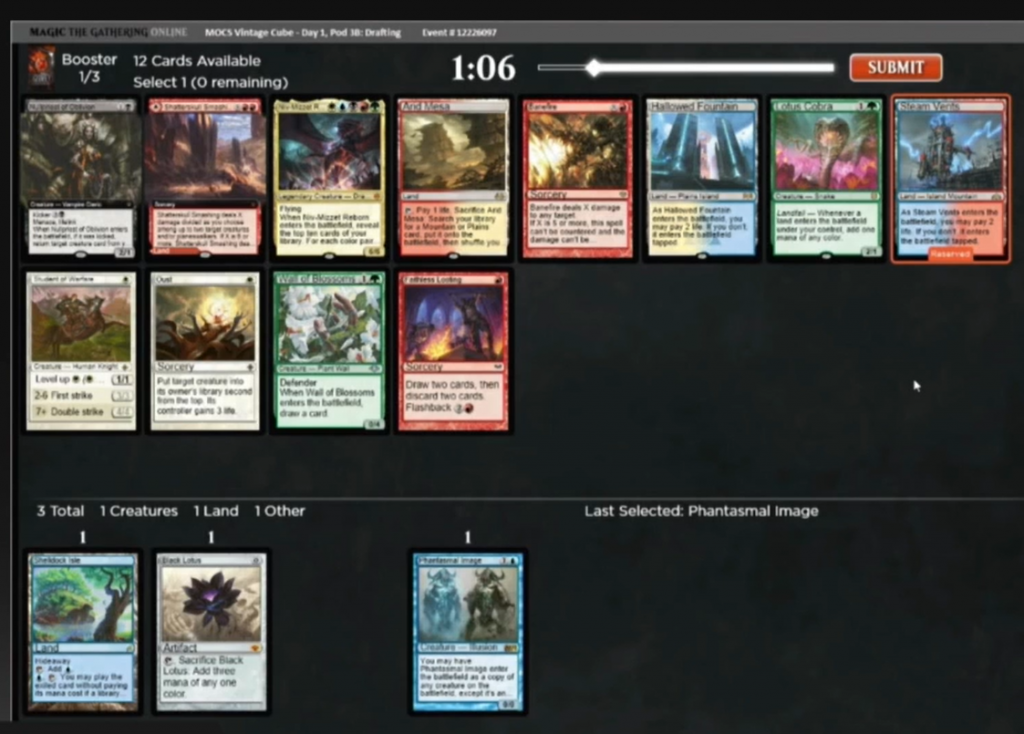
Picking a land is an easy call as none of the spells are impressive, but replace Banefire with a key card for a strong archetype or a generally useful but not exceptional card in its colour — say, Entomb and Garruk Wildspeaker respectively. If we take Arid Mesa this early, unless we end up in Boros we are probably committing to hoping specific two-color lands for our actual colours are in the card pool and taking one over what might be an important card for our deck. Entomb might be less likely to make our deck but its upside is incredibly high and we can watch intently for any signs that Reanimator is open; Garruk is sure to make the cut in any green deck and, along with the cards we can take over a hypothetical two-color land, may contribute more to our win rate than the splash enabled by Arid Mesa even if that does come together.
A later sequence from the same draft illustrates this dilemma:
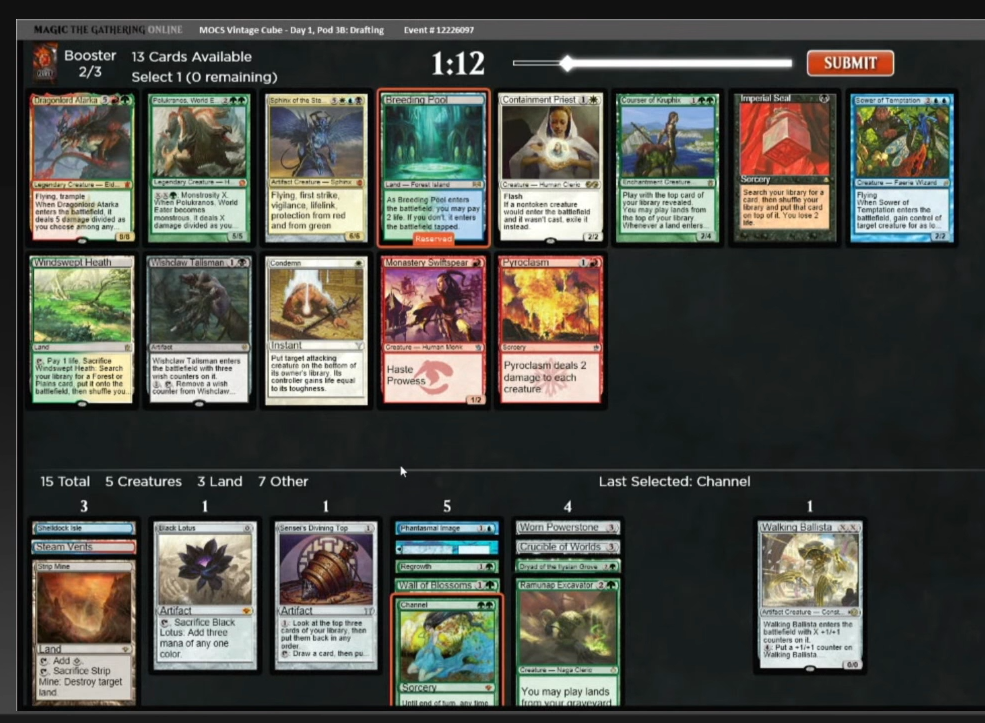
Courser of Kruphix is a great but not vital card for Tiu’s deck. Breeding Pool is an on-colour shockland for other fetchlands but drafters following Edgar’s rubric will try to ensure he doesn’t get one. Windswept Heath is currently just a green source, but it could be much more and it has synergies with his land recursion effects and Sensei’s Divining Top.
After taking Breeding Pool, Tiu almost immediately finds a Tropical Island that could have filled the same role, with Oracle of Mul Daya in that pack posing a similar choice, as well as other hits in Brainstorm and Glen Elendra Archmage. As this pack dwindles, he takes Trygon Predator, a card whose value varies considerably as outlined above, over a Taiga that currently has no use and Eureka over a Wandering Fumarole. In the third pack, he has to choose between Wooded Foothills — perhaps his last shot at a relevant fetchland — and Fractured Identity, which the Windswept Heath he gave up would have helped to splash. He then has to take the best possible red card in Sneak Attack over a Volcanic Island in the same pack that would help to cast it and passes up a Tundra for a Yavimaya Elder that offers fixing but in the form of a marginal spell.
Ultimately, Tiu’s deck had more than enough playables and was able to support both splashes anyway, but this series of choices highlights the contingencies that this focus on lands introduces into the drafting process.
This demonstrates why Prismatic Vista is the best fixing land in the Cube by a wide margin, offering the same minor synergies as normal fetchlands — Brainstorm effects, Crucible of Worlds / Ramunap Excavator — while being colour-agnostic and not committing you to tough picks in the future.
Digital Magic is not tabletop Magic — for better and for worse.
A recurring charm of Eternal formats is the ability to take elaborate sequences of game actions that are hard enough with Magic Online’s chess clock and close to impossible on Arena (as inexperienced Kethis Combo pilots can testify). Decks like Krark-Clan Ironworks required not just a deep understanding of the rules and in-game tactics but esports-worthy reflexes to operate on a digital client.
This runs into an obvious problem with loops that don’t end the game — like the infinite life combos with Heliod, Sun-Crowned in the deck that won the tournament for Michael Jacob and earned as hearty a recommendation as you’ll find from Ari Lax.
Oliver Tiu became the main character of the Magic Online Championship after a dispute with Jacob over the best way to navigate this dynamic. After demonstrating the infinite life loop in Game 1, the two made a gentlemen’s agreement not to burn both players’ time by forcing Jacob to gain enough actual life to stave off rapidly increasing combat damage from Field of the Dead tokens. In Game 3, after Jacob pulled a rabbit out of his hat by assembling his combo but not going through the motions, Tiu had the theoretical out of decking him by looping Mystic Sanctuary and Cryptic Command, but this was impossible to execute in his remaining time, prompting Tiu to renege on the agreement and attack for lethal damage.
After an exhausting round of Twitter drama that ended in Tiu asking for Jacob to be given the win anyway, the incident became the one blemish on what was otherwise a celebration of Magic Online. Regardless of your ethical stance here, these realities of digital Magic are something that tournament organizers and players have to consider ahead of time — these agreements are necessarily informal, and anyone who registers a deck like Selesnya Company for an online event does so at their own risk.
Online Magic has many benefits over tabletop Magic from a tournament integrity perspective — and certainly from a coverage perspective — but comes with its own problems especially with remote play introducing differences in technical equipment and the like between players. It’s very fortunate that we haven’t seen more high-stakes matches decided by connection or client issues; if some of these are unpredictable, they are also inevitable, and I hope tournaments like the Zendikar Rising Championship have rigorous policies in place to handle these.
Between rounds, Patrick Sullivan raised the question of who the best Magic Online players are and how this is different from just asking who the best Magic players were who don’t share actual GOAT Paulo Vitor Damo da Rosa’s famous aversion to Magic Online. Online play has always been a pipeline to wider Magic success — Josh Utter-Leyton, Brad Nelson, and Reid Duke were all once better known (and feared) by their Magic Online handles — but the MOCS highlights the talents of online grinders like Logan Nettles (Jaberwocki) who are masters of their domain. In covering the SCG Tour Online events I always tried to highlight the geographic diversity of competitors as a selling point of digital Magic and I love that players who didn’t have easy access to tabletop play can now make a name for themselves. Paulo’s success is so astonishing in part because living in Brazil meant that your worst travel story for a Grand Prix or SCG Open was a routine occurrence for him; I’m glad the next Paulo’s career won’t be derailed by those obstacles before it’s begun.
Force of Negation is not the safety valve it once was in Modern.
Force of Negation shook Modern to its foundations but it took some time for those rumbles to be felt as Hogaak, Arisen Necropolis and other menaces stole the spotlight for a while. Allowing blue decks the same freedom to tap out that they have in Legacy patched up a major weakness of control since Modern’s inception and incentivized playing with sorcery-speed haymakers like planeswalkers and Uro, Titan of Nature’s Wrath (and Omnath, Locus of Creation more recently). Combo decks that relied on noncreature spells on their own turn now had a much higher bar to clear to compete in Modern.
In that sense, Force of Negation has been a victim of its own success. The combo decks that survived these conditions and showed up for this tournament rely on creatures, such as Balustrade Spy; Primeval Titan; and Heliod, Sun-Crowned, or can find a window to resolve payoffs like Summoner’s Pact or Collected Company on the opponent’s turn. You’d expect Force of Negation to be weak against aggro and it certainly is — Rakdos and Jund Death’s Shadow, the second-most-popular archetype in the tournament, are excellent at tearing apart a weaker draw that’s bogged down by dead counters.
Its main function now is in blue mirrors as the only versatile answer to Wrenn and Six on the draw and a way to justify attempting your own sorcery-speed threats while protecting against the opponent’s. Even here, its utility varies; you need Force for Teferi, Time Raveler but want anything other than Force after Teferi, Time Raveler. Having to cast one or more Forces is an easy way to fall behind on action in a matchup where all your blue cards are strong or replace themselves.
If you think the mirrors are tenable without Force of Negation, I like Matthew Vook’s more proactive take on the Time Warp variant of Four-Colour Control.
Creatures (7)
Planeswalkers (9)
Lands (27)
Spells (17)

Manabases matter.
Whenever a blue deck was on camera in Modern, I was baffled as to why their pilots registered these obscenely powerful cards, as they didn’t seem to care about casting them. You need Field of the Dead in your Four-Colour Control deck if you’re playing Hour of Promise — and maybe want it if you don’t, given its strength in any grindy matchup — but please don’t pretend that doesn’t come at a cost. I support setting ambitious goals for yourself but casting Omnath, Locus of Creation and Cryptic Command reliably in a deck with four colourless lands is an unnecessary challenge. Watching a Temur Scapeshift player have to ‘Look at the cards.’ as Stomping Ground laughed at their Archmage’s Charm against Oops All Spells was strangely satisfying.
You are not above playing Burn.
Burn may have the most stigma attached to it of any macro-archetype in Magic history. Its status as an on-boarding deck for newer players earns the scorn of a certain crowd and its homogeneity can make it somewhat boring or frustrating to watch and play against.
That doesn’t matter. Oliver Tiu is better than me and almost certainly better than you and he decided that Boros Wizards (Lurrus) was the best choice for this tournament. Cedric Phillips won a seat in the Zendikar Rising Championship with Boros Wizards and the most recent qualifier on Magic Online saw a Boros Wizards mirror in the finals. Money and glory trump pride, especially when that pride was always misplaced.
Creatures (21)
- 4 Eidolon of the Great Revel
- 4 Monastery Swiftspear
- 4 Soul-Scar Mage
- 4 Ghitu Lavarunner
- 4 Viashino Pyromancer
- 1 Wayward Guide-Beast
Lands (19)
Spells (20)

Burn may be the deck you hand to a more casual friend because it’s easy to get the first 70% from it, but that doesn’t make getting the last 10% easy. Patrick Sullivan referenced an age-old discussion of deck specialization — it’s likely that the ‘best Burn player’ isn’t him or another red deck specialist but whoever you think the best absolute Magic player is — but he proved this weekend that he’s the best person at thinking and talking about these decks that you’ll find anywhere. Whether or not you plan on playing Pioneer, Burn, or Pioneer Burn, you owe it to yourself to watch the Burn mirror between Oliver Tiu and Juan Jose Rodriguez Lopez and learn what you can from Patrick.
Sideboards are more important than ever in Pioneer.
This might seem strange as the victorious and most popular deck from the Magic Online Championship, Mono-Green Devotion, has two different sideboard toolboxes for Karn, the Great Creator and Vivien, Arkbow Ranger, closing off the rest of the sideboard entirely. If anything, that deck illustrates the importance of discipline in assigning those slots. I don’t think I saw The Great Henge live up to its name at any point over the weekend and I’m not sure if Lars Dam’s Pyxis of Pandemonium is actually necessary against Oops All Spells. With all other slots accounted for, the flex slots you can open up are that much more important.
Elsewhere, the format is more infested with linear decks than at any point in its varied history. Lotus Field Combo requires highly specific hate, while you have a wide array of graveyard hate to choose from against Oops All Spells that won’t be useful otherwise. A normal formula of cheap removal and lifegain can be fine against Boros Wizards, but if your deck is fundamentally poor in the matchup, heavier weapons may be needed. Access to these tools early in every game via Karn, the Great Creator is one of the main appeals of Mono-Green Devotion and makes me wonder if some other Karn deck is possible — perhaps this format’s Omnath Ramp shells?
The Magic Online Championship, like Vintage Cube, may work better as an occasional treat than the default for events of its kind, but it excelled itself as both education and entertainment. and it was fitting that Michael Jacob, a scary opponent on Magic Online since the day the client launched, is its final champion.

